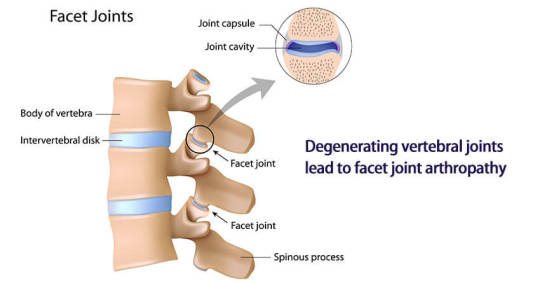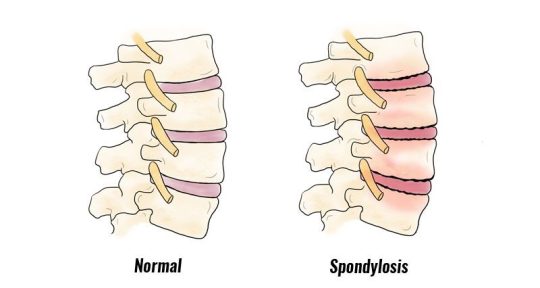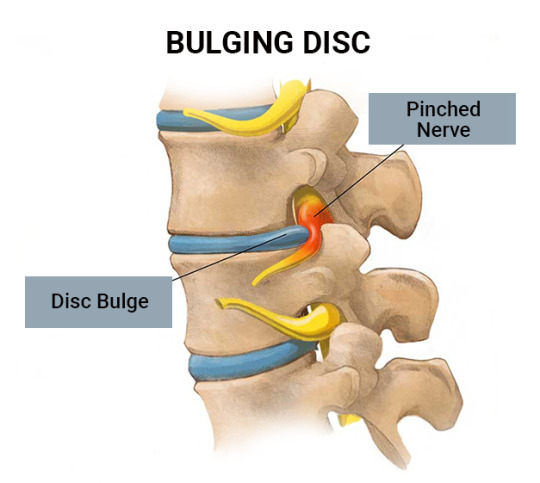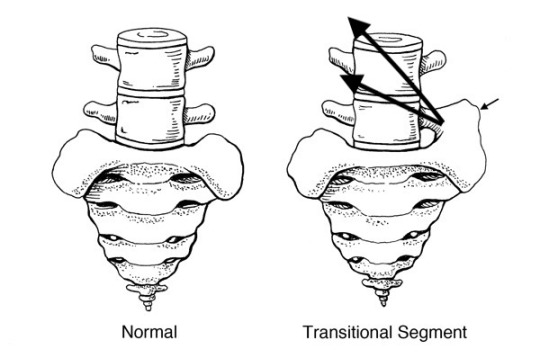#Spondylosis
Explore tagged Tumblr posts
Text
My back keeps giving me these little funky electric shocks every time I move, and I'm in a lot of pain rn, but I have to keep working on my computer, writing a book that no one will ever read, and... I'm going insane. I'm actually going batshit crazy.
How did I go from 20 years old college student with a job and a partner, to a nearly 24 years old unemployed, chronically ill antisocial goblin with no money and will to live?
I want financial compensation from God.
This sucks.
6 notes
·
View notes
Text
What It Means To ENjoy Being Alive





#im sad about my back today fellas#sacralization#spondylosis#facet arthopathy#sciatica#at least medical diagrams are fun to look at right?#disability tag
1 note
·
View note
Video
youtube
Kako da se riješite boli u vratu i ramenima? - Domaći recept koji pomaž...
#youtube#cervical spondylosis#cervical pain treatment#cervical spine#cervicalspine#cervical#cervical cancer#skolioza#spondyloarthritis#spondylosis#osteochondrosis#neck pain#vratna kičma#kiropraktika#fizikalna terapija#bolovi u vratu#bolovi u ramenima
0 notes
Text
Back Pain Confusion? Dr. Pranjal Pandey Explains Spondylosis, Spondylitis, Spondylolysis & Spondylolisthesis
Are you struggling to understand the differences between Spondylosis, Spondylitis, Spondylolysis, and Spondylolisthesis? In this must-watch video, Dr. Pranjal Pandey, a leading spine specialist, breaks down these complex conditions in simple terms. Learn how each impacts your spine, the symptoms to look out for, and the best treatment options. Don't miss this expert advice—your spine health depends on it!
#SpineHealth#Spondylosis#Spondylitis#Spondylolysis#Spondylolisthesis#BackPainRelief#SpineSpecialist#DrPranjalPandey#SpineTreatment#HealthTips#MedicalAdvice#BackPain#Neuroscience#SpineCare
0 notes
Text
Basti Panchkarm :-
Panchkarm is mainly of five types, vaman virechan basti nasya & raktmokshan.
In rainy season, most of the ayurvedic physician recommend Basti therapy.
Basti Panchkarm treatment takes total 8 days. It includes Abhyang ( Oil massage) Swedan (Steam bath) & basti (Colon detox) therapy.
Basti Panchkarm is very effective in Vat vyadhis like Arthritis, Rheumatoid, Joint pain, Swelling, Sciatica, Slip disc, Spondylosis, and Frozen shoulder.
Basti plays a vital role to balance hormones hence most of the times basti is recommend in PCOD, PCOS, Menopausal age, Thyroid, and Infertility. Basti helps to increase quality- quantity of Ovum (female beej) & Sperms ( male beej). Couples who want to conceive can also do basti Panchkarm for beej shuddhi. Hence the couples who want to take a chance for baby, I personally recommend Basti Panchkarm for both husband and wife.
Basti helps to improve digestion, corrects constipation problems, piles and fissure complaints.
Basti helps to reduce weight, inch loss, removes excess fat accumulation on tummy.
Acharya Charak Describes Basti is Ardha Chikitsa means 50 % of health related problems can be cure only by Basti Panchkarm.
Many types of basti Panchkarm is available like Niruh, Anuvasan, Matra, Uttar basti, Janu basti, kati basti, hruday basti , netra basti, shirobasti etc...
#basti#ayurveda#panchakarma#ayurvedic doctor#ayurvedictreatment#drnarkhedeayurvedclinic#panchakarma treatment#drsagarnarkhede#ayurvedicclinic#arthritistreatment#spondylosis#cervical spondylosis#jointpain#frozen shoulder#rheumatoid arthritis#swelling#oilmassage#steambath#hormonalhealth#pcodtrearment#pcos treatment#infertilitytreatment#thyroid#weight loss#health
0 notes
Text
I hate chronic pain and how it can change you. I hate the depression that comes with it and missing how my life was before it existed. I didn't ask for this but I gotta learn to deal with it. I dislike how much I blame myself, that somehow its something I did that caused this....that maybe I'm being punished. I'm so tired everyday and being sick with this cold is driving me to the edge because it makes me hurt more and all my muscles are so tense. My mind won't stop going back to when the pain was more manageable, it all just hurts so much and I feel so alone even tho I know I am supported...how am I supposed to keep going with this pain every single day.
0 notes
Text
What is Spondylolysis? An Informational Blog.

Spondylosis is a term that refers to a degenerative condition affecting the spine. Wear & tear in our bodies including bones is normal as we age. This is also true for the backbone of our body, the spine. Spondylosis encompasses various changes that occur within the spine due to this natural process. In some rare cases, surgery involving spine implants is required for the treatment of the condition.
0 notes
Text

Spondylosis is a degenerative condition that affects the spine, causing stiffness, pain, and decreased mobility. It involves the wear and tear of spinal discs and joints, often associated with aging. Seeking treatment at a Multispeciality Hospital in Ghaziabad can help manage spondylosis effectively.
0 notes
Text
Spondylitis Treatment in Homeopathy
Spondylitis treatment in Homeopathy, a condition characterized by inflammation of the vertebrae, focuses on addressing the underlying causes and providing symptomatic relief. Homeopathic remedies for spondylitis may include substances like Rhus toxicodendron, Bryonia alba, or Calcarea fluorica, chosen based on the individual's specific symptoms, constitutional characteristics, and the nature of the spondylitis. These remedies are believed to stimulate the body's self-healing mechanisms, reduce inflammation, and alleviate pain associated with spondylitis. Homeopathic treatment aims to provide a holistic approach, taking into account the patient's overall health, lifestyle, and emotional well-being, and may be complemented by lifestyle modifications and physical therapy for a comprehensive and personalized approach to managing spondylitis. Individual responses to homeopathic treatment may vary, and it is advisable to consult with a qualified homeopathic practitioner for an accurate diagnosis and a tailored treatment plan based on the patient's unique health profile.
0 notes
Text

Experience the best in Spondylosis treatment in Delhi with Amit Chugh. A trusted expert with over a decade of experience, offering compassionate care and innovative solutions. Explore our comprehensive services for optimal well-being.
0 notes
Text
Treatment for VERTIGO
If you are searching tratment for vertigo problem, Consult with our Best Neuro Physician Dr. Chirag Gupta.

#Drchiraggupta#neurophysician#neurologist#neurology#doctor#brain#neuroscience#medicine#brainhealth#stroke#epilepsy#headache#nerveandmuscledisorder#nerves#Dementia#parkinsons#alzheimers#nervemuscledisorder#cervical#spondylosis#vertigo
0 notes
Text

Physical therapy for Spondylosis
Spondylosis is a term for a variety of age-related changes that can develop in the spine. If your aging spine is aching, call Evolve Physical Therapy in Brooklyn Today! 1-718-258-3300
#physicaltherapy#sportsPT#DPT#Brooklyn#physicaltherapists#wellness#fitness#NYC#prehab#spinerehab#spondylosis#backphysicaltherapy#backrehab#arthritis
0 notes
Link
Spinal Arthritis: Causes, Symptoms, and Treatment Spinal arthritis, also known as spondylosis or osteoarthritis of the spine, is a common condition affecting millions of people worldwide. It occurs as a result of the natural aging process and can cause discomfort and limitations in daily life. In this comprehensive guide, we will delve into the intricacies of spinal arthritis, its origins, the symptoms it presents, and effective ways to manage and alleviate its impact. What is Spinal Arthritis? Spinal arthritis is a degenerative condition that primarily affects the joints and discs in the spine. It falls under the broader category of osteoarthritis, which is characterized by the breakdown of cartilage, the cushioning tissue between the bones in a joint. While spinal arthritis is often associated with aging, it can also develop due to other factors such as injury, genetics, or excessive wear and tear on the spine. [caption id="attachment_58491" align="aligncenter" width="376"] spinal arthritis[/caption] Types of Spinal Arthritis Osteoarthritis: This is the most common type of spinal arthritis and occurs when the protective cartilage in the spine wears down over time. As a result, the bones can rub against each other, causing pain and stiffness. Rheumatoid Arthritis: Unlike osteoarthritis, rheumatoid arthritis is an autoimmune disorder that can affect the spine and other joints. It occurs when the immune system mistakenly attacks the synovium, the lining of the membranes that surround the joints. Ankylosing Spondylitis: This is a type of inflammatory arthritis that primarily affects the spine. It causes inflammation of the vertebrae, leading to pain and stiffness. In severe cases, it can result in a fusion of the spine. Causes and Risk Factors Spinal arthritis primarily develops due to the natural aging process, but several factors can increase the risk of its occurrence: Age: The risk of spinal arthritis increases with age, particularly in individuals over 50. Genetics: A family history of arthritis can predispose individuals to the condition. Obesity: Excess body weight places additional stress on the spine and joints, increasing the likelihood of arthritis. Injury: Previous injuries to the spine can contribute to the development of spinal arthritis. Gender: Men and women are affected differently by various types of spinal arthritis. Ankylosing spondylitis is more common in men, while osteoarthritis is more prevalent in women. Signs and Symptoms The symptoms of spinal arthritis can vary depending on the type and location of the condition within the spine. However, some common signs and symptoms include: Pain: Persistent pain in the neck or lower back is a hallmark of spinal arthritis. The pain may be dull and aching or sharp and stabbing. Stiffness: Reduced flexibility and stiffness in the affected area, especially in the morning or after periods of inactivity. Limited Range of Motion: Difficulty in moving the spine, which can affect daily activities like bending, twisting, or lifting. Nerve Compression: In some cases, spinal arthritis can lead to compression of spinal nerves, causing symptoms such as radiating pain, numbness, tingling, or weakness in the limbs. Changes in Posture: Individuals with spinal arthritis may experience changes in their posture, such as a stooped or hunched appearance. Grating Sensation: A sensation of bone grinding on bone when moving the spine. Diagnosis If you experience symptoms of spinal arthritis, it's essential to seek medical evaluation for a precise diagnosis. Healthcare professionals employ various diagnostic methods to confirm the presence of spinal arthritis and determine its type and severity. Diagnostic Tests and Procedures Medical History: Your healthcare provider will discuss your medical history, including any family history of arthritis and details about your symptoms. Physical Examination: A physical examination will involve assessing your spine's range of motion, looking for areas of tenderness, and checking for any neurological deficits. Imaging Studies: X-rays, MRI scans, and CT scans can provide detailed images of the spine, revealing the extent of joint damage, bone spurs, or nerve compression. Blood Tests: In cases of inflammatory arthritis like rheumatoid arthritis, blood tests may be conducted to check for elevated levels of specific antibodies and inflammation markers. Diagnostic Injections: In some instances, your healthcare provider may recommend diagnostic injections of local anesthetics into specific joints or nerves to identify the source of pain. Bone Scans: These scans can detect areas of increased bone activity and are useful in diagnosing conditions like ankylosing spondylitis. Treatment and Management The management of spinal arthritis aims to relieve pain, improve function, and enhance the quality of life for individuals affected by this condition. Treatment approaches can vary based on the type and severity of spinal arthritis, as well as individual factors such as age, overall health, and lifestyle. Here, we explore various treatment modalities: Conservative Treatments Physical Therapy: Physical therapy programs focus on exercises that enhance strength and flexibility, helping to alleviate pain and improve spinal function. Medications: Nonsteroidal anti-inflammatory drugs (NSAIDs), analgesics, and muscle relaxants are commonly prescribed to manage pain and inflammation associated with spinal arthritis. Lifestyle Modifications: Maintaining a healthy weight, adopting good posture, and avoiding activities that exacerbate symptoms can be effective in managing spinal arthritis. Heat and Cold Therapy: Applying heat or cold packs to the affected area can provide relief from pain and stiffness. Assistive Devices: Devices such as braces, neck collars, or canes can offer support and improve mobility. Interventional Treatments Epidural Steroid Injections: For cases with severe pain or nerve compression, corticosteroid injections into the epidural space can provide significant relief. Facet Joint Injections: These injections target the facet joints in the spine and can help reduce pain and inflammation. Radiofrequency Ablation: This minimally invasive procedure uses radio waves to disable nerves responsible for transmitting pain signals. Surgical Interventions Spinal Fusion: In advanced cases of spinal arthritis, where there is significant instability and pain, spinal fusion surgery may be recommended to fuse two or more vertebrae together, stabilizing the spine. Laminectomy: This procedure involves removing a portion of the vertebra called the lamina to relieve pressure on the spinal cord or nerves. Disk Replacement: For individuals with damaged spinal disks, artificial disk replacement surgery may be considered as an alternative to fusion. Complementary and Alternative Therapies Acupuncture: Some individuals find relief from spinal arthritis symptoms through acupuncture sessions. Chiropractic Care: Chiropractors can perform adjustments to improve spinal alignment and reduce pain. Massage Therapy: Therapeutic massages can help relax muscles and alleviate discomfort. Nutritional Supplements: Certain supplements, such as glucosamine and chondroitin, are believed to promote joint health. Lifestyle and Home Remedies Exercise: Engaging in low-impact exercises like swimming, walking, or yoga can maintain joint flexibility and reduce pain. Diet: A balanced diet rich in anti-inflammatory foods, such as fruits, vegetables, and fatty fish, can help manage inflammation associated with spinal arthritis. Pain Management Techniques: Learning pain management strategies, including relaxation techniques and mindfulness, can be valuable in coping with chronic pain. Living with Spinal Arthritis Spinal arthritis is a chronic condition that may require long-term management. However, with the right treatment and lifestyle adjustments, individuals can lead fulfilling lives and minimize the impact of the condition on their daily activities. Here are some tips for living with spinal arthritis: Stay Active: Regular, gentle exercise can help maintain joint flexibility and muscle strength. Maintain a Healthy Weight: Extra weight places added stress on the spine and joints, so maintaining a healthy weight is essential. Use Assistive Devices: If recommended by your healthcare provider, utilize devices like braces or canes to support mobility. Manage Stress: Stress can exacerbate pain, so stress management techniques can be beneficial. Follow Treatment Plans: Adhering to prescribed treatments and medications as directed by your healthcare provider is crucial for effective management. Stay Informed: Educate yourself about spinal arthritis and actively participate in your treatment decisions. Seek Support: Consider joining support groups or seeking counseling to manage the emotional aspects of living with a chronic condition. FAQsto spinal arthritis : Q: What is spinal arthritis? A: Spinal arthritis, also known as spondylosis or osteoarthritis of the spine, is a degenerative condition that affects the joints in the spine, leading to pain, stiffness, and reduced mobility. Q: What causes spinal arthritis? A: The primary cause of spinal arthritis is the natural aging process. Wear and tear on the spinal joints over time, along with genetic factors and lifestyle choices, contribute to its development. Q: What are the common symptoms of spinal arthritis? A: Common symptoms include back pain, stiffness, reduced flexibility, and, in severe cases, compression of spinal nerves leading to symptoms in the arms or legs. Q: How is spinal arthritis diagnosed? A: Diagnosis typically involves a physical examination, medical history review, imaging tests (X-rays, MRI), and sometimes blood tests to rule out other conditions. Q: Can spinal arthritis be cured? A: No, spinal arthritis is a chronic condition, and there is no cure. However, its symptoms can be managed effectively with various treatment options. Q: What are the treatment options for spinal arthritis? A: Treatment may include pain management, physical therapy, medications, lifestyle modifications, and in severe cases, surgery to relieve nerve compression. Q: Can lifestyle changes help manage spinal arthritis? A: Yes, maintaining a healthy weight, regular exercise, proper posture, and avoiding smoking can significantly improve spinal arthritis symptoms. Q: Is spinal arthritis the same as rheumatoid arthritis of the spine? A: No, spinal arthritis (osteoarthritis) and rheumatoid arthritis are different conditions. Rheumatoid arthritis is an autoimmune disease, while spinal arthritis is degenerative. Q: At what age does spinal arthritis typically develop? A: Spinal arthritis most commonly affects individuals over the age of 50, but it can develop earlier in life, especially with risk factors. Q: Can spinal arthritis lead to disability? A: In some cases, spinal arthritis can cause significant pain and mobility issues, potentially leading to disability. However, with proper management, many people lead active lives. Conclusion Spinal arthritis is a prevalent and often challenging condition that can impact the lives of many individuals. It is crucial to recognize the symptoms, seek medical advice when necessary, and explore appropriate treatment options. While there may not be a cure for spinal arthritis, proactive management can significantly improve the quality of life for those affected.
#cervical_arthritis#degenerative_disc_disease#degenerative_spinal_condition#lumbar_arthritis#osteoarthritis_of_the_spine#spinal_osteoarthritis#spine_degeneration#spondyloarthritis#spondylosis#thoracic_arthritis
0 notes
Text
youtube
Back Pain Confusion? Dr Pranjal Explains Spondylosis, Spondylitis, Spondylolysis & Spondylolisthesis
Are you struggling to understand the differences between Spondylosis, Spondylitis, Spondylolysis, and Spondylolisthesis? In this must-watch video, Dr. Pranjal Pandey, a leading spine specialist, breaks down these complex conditions in simple terms. Learn how each impacts your spine, the symptoms to look out for, and the best treatment options. Don't miss this expert advice—your spine health depends on it!
#SpineHealth#Spondylosis#Spondylitis#Spondylolysis#Spondylolisthesis#BackPainRelief#SpineSpecialist#DrPranjalPandey#SpineTreatment#HealthTips#MedicalAdvice#BackPain#Neuroscience#SpineCare#Youtube
0 notes
Text
Ayurveda is a traditional system of medicine from India that focuses on holistic healing and balancing the body's energies. It utilizes natural treatments, including herbal medicines, Panchakarma therapies, dietary guidelines, and lifestyle changes, to address various health issues like joint pain, arthritis, allergy, asthma, cough, sneezing, indigestion, acidity, hormonal imbalance, PCOD, Infertility, thyroid, B.P, Sugar and skin, nail and hair complaints like many more.
Ayurveda emphasizes prevention and individualized treatment, considering the unique constitution (Prakriti) of each person.
#jointpain #jointpaintreatment #backpain #sciatica #allergytreatment #sneezing #asthmaproblems #cough #acidityproblems #indigestionrelief #harmonalimbalance #PCOD #thyroidtreatment #bloodpressure #sugar #skinproblems #nailproblems #haircomplaints #ayurvedictreatment #AyurvedicMedicine #panchakarmatherapy #panchakarmatreatment #ayurvedicclinic #ayurvedicdoctor #ayurvedahealing #ayurveda #instahealth #drnarkhedeayurvedclinic #drsagarnarkhede

#jointpain#arthritistreatment#spondylosis#sciatica#allergy treatment#sneezing#acidity#indigestion#harmonalimbalance#pcodtreatment#thyroid#blood pressure#high blood sugar#skin treatment#hair problems#ayurvedictreatment#ayurvedicmedicines#ayurvedic clinic#ayurvedicdoctor#ayurveda#panchakarma#panchakarma treatment
0 notes
Text

𝗥𝗲𝘀𝘁𝗼𝗿𝗶𝗻𝗴 𝗠𝗼𝗯𝗶𝗹𝗶𝘁𝘆 𝗮𝗻𝗱 𝗥𝗲𝗰𝗹𝗮𝗶𝗺𝗶𝗻𝗴 𝗟𝗶𝗳𝗲: 𝗢𝗿𝘁𝗵𝗼𝗽𝗮𝗲𝗱𝗶𝗰 𝗦𝗲𝗿𝘃𝗶𝗰𝗲𝘀 𝗮𝘁 𝗛𝗲𝗮𝗹𝗶𝘅 𝗛𝗼𝘀𝗽𝗶𝘁𝗮𝗹𝘀
Experience a life free from musculoskeletal challenges with our comprehensive Orthopaedic Services at Healix Hospitals! 🏥✨
Our team of skilled #orthopaedic specialists is dedicated to diagnosing, treating, and rehabilitating a wide range of conditions. 👍
From joint replacements to sports injuries, we're here to restore your mobility and help you reclaim an active, pain-free lifestyle.
Your journey to better #musculoskeletalhealth starts here. 💪🌈
Contact information :
☎️ Call us on +91 40-4200-7070
👉 Visit : https://www.healixhospitals.com/contact
#orthopedicdoctor#orthopedic#orthopedicsurgeon#rheumatoidarthritis#discprolapse#spondylosis#orthopaedic#orthopedicsurgery#ortholife#osteoarthritis#osteoarthritistreatment#backpain#Painrelief#healthyspine#Jointpains#orthocare#OrthopaedicCare#MobilityRestored#HealthyMovement#HealixHospitals
0 notes